Have you noticed how much families appreciate those multi-generational photos that capture everyone together! Getting three generations, twenty-plus cheerful faces, and not one person blinking in a single frame can feel like a big accomplishment in photography! Having photographed many extended families over several years, we’ve put together a dependable approach that consistently creates wonderful group portraits, even when families have lots of people and fun dynamics.
Table of Contents
Large Family Group Photography: A Welcoming Photographer’s Guidance
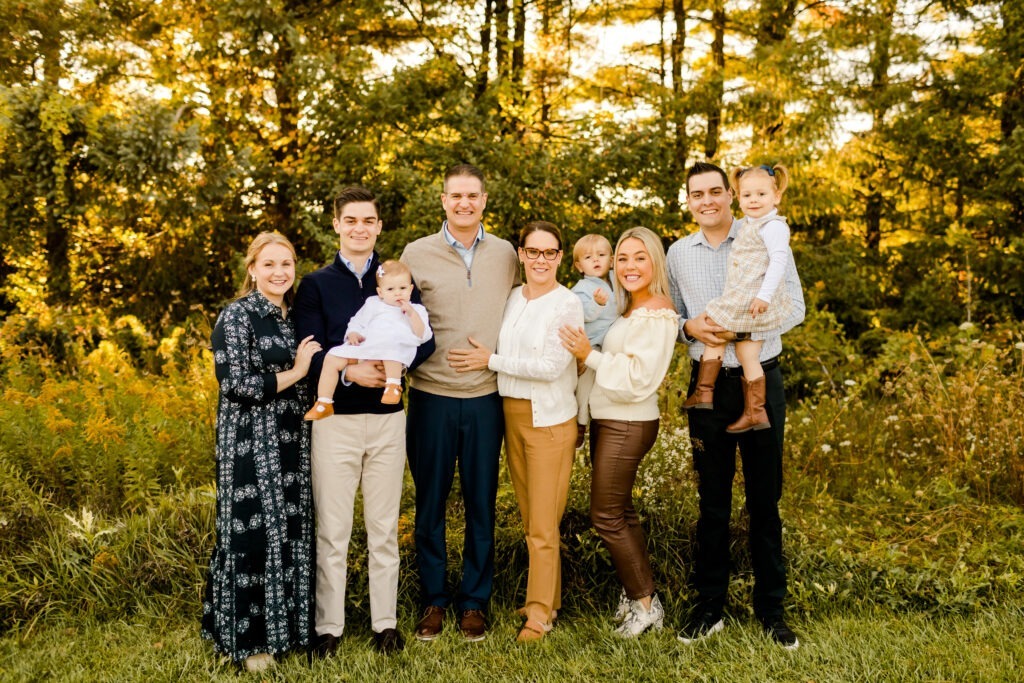
When we first took on a reunion with many family members, it quickly became clear that larger family photography is a whole different experience that needs specific methods and a knack for connecting with people.
A great example of this involved a three-month-old baby and 92-year-old great-grandparents. By using a multi-level arrangement on a gentle hillside and an f/8 aperture with careful focus, we made a striking portrait where every face looked clear and natural. The family matriarch later shared with us that it was the first time in 15 years they had a photo where everyone looked great at the same time.
Understanding the Hurdles of Large Family Photography
Bigger family photography has specific challenges that can test even experienced photographers. That sought-after scene where a grandparent isn’t mid-blink, a child is looking toward the camera, and a teenage cousin isn’t showing that classic forced grin can be difficult to achieve.
One of the common technical errors photographers make when shooting extensive family groups is using too wide an aperture, like f/2.8 or f/1.8. This can lead to some faces, particularly those at the edges or in different rows, being out of focus. Using a smaller aperture such as f/5.6 or f/8 provides more depth of field and helps make sure all faces are sharp, especially when you arrange your group as close to a single focal plane as possible.
Another notable hurdle is managing angled or uneven group arrangements. When families form a U-shape with people on the ends stepping forward or backward, some family members can end up outside the focus area. We always guide everyone to line up their feet evenly with those in the center, keeping everyone within the same focus zone.
Key Thought:
Succeeding with larger family groups requires both technical skill, appropriate aperture, lens selection, and group placement, and excellent people guidance abilities. Get ready for both aspects equally!
Helpful Preparation for a Good Family Photo Session
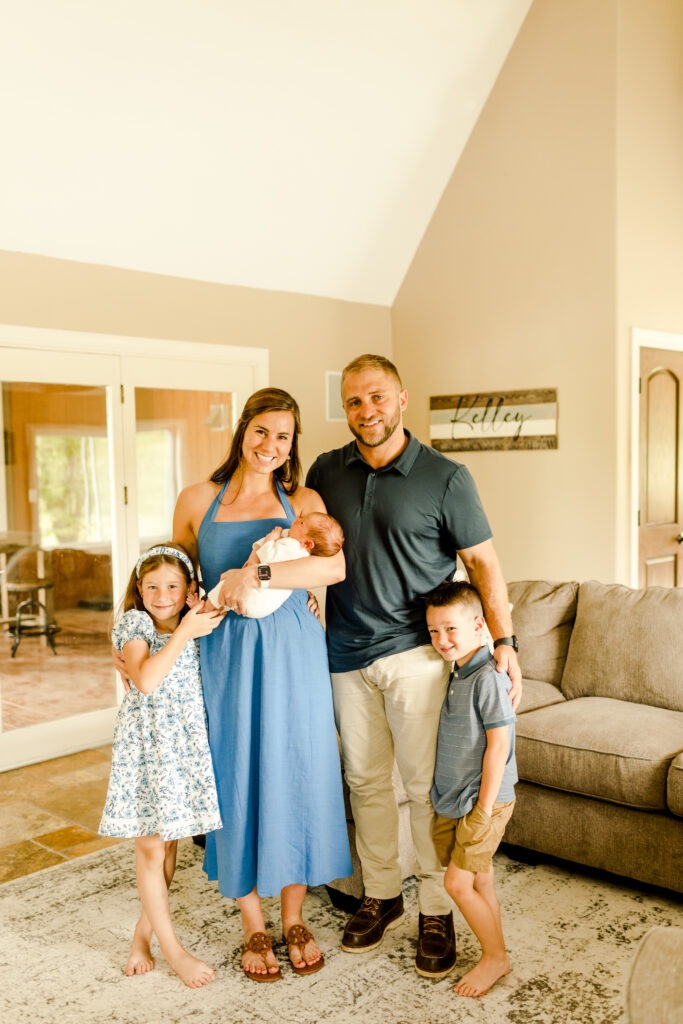
The distinction between busy photo sessions and smooth, enjoyable ones occurs well before anyone steps in front of the camera.
Interacting with the Family: Setting Expectations and Receiving Ideas
Open communication builds the foundation for successful larger family photography. When a family contacted us about photographing their gathering, we set up an introductory call to understand what they envisioned. During our chat, we learned they wanted to highlight the four-generation dynamic and show the connections between cousins who don’t see each other often.
We use these pre-session discussions to set realistic expectations about timing, clothing coordination, and what defines a good session. We explain that while we’ll aim for those wonderful exposures where everyone looks great simultaneously, we might use digital composition in post-processing to get the ideal final picture.
For larger groups, we suggest creating a downloadable pre-session survey that covers:
- Names and ages of all attending
- Important combinations they want captured
- Any physical considerations to keep in mind
- Special connections or achievements being recognized
- Preferences regarding posed versus natural images
This information becomes your blueprint for the session, allowing you to plan poses that suit their specific family structure before anyone arrives.
Making a Detailed Image Listing and Project Plan
Based on survey responses, make a prioritized image listing. When photographing a reunion of many individuals, we structured our image progression like this:
- Complete family group, everyone together
- Grandparents with all 12 grandchildren
- Individual immediate families, 5 separate families
- Sibling combinations, the 4 adult siblings together
- Generational photos, all women, all men, cousins
- Specific requested combinations
This structured approach helps get the most important combinations first, especially those with young children or older family members who might get tired quickly.
Selecting the Ideal Place and Lighting Conditions
Not maintaining distance from the background is another typical error in larger family photography. When the group stands too close to busy backgrounds, the outcome can be cluttered photos that pull attention away from your subjects. We always place families at least six feet, and ideally more, away from any background elements.
Location selection greatly influences your rate of good outcomes. For an extended family, we chose an open park with mature trees that offered both ample space and natural framing. This spot provided:
- Several levels with gentle slopes for creating height variation
- Clear, uncluttered backgrounds
- Easy access for older family members
- Choices for both shade and filtered light
Regarding timing, we usually schedule sessions during the golden hour, which is approximately two hours before sunset when the light is warm and pleasant. For sessions outside ideal lighting hours, we look for locations with plenty of open shade from large trees or north-facing buildings.
Getting Your Camera Equipment Ready and Checked
Technical preparation is important! Using the incorrect lens is a common observation in group photography. Wide-angle lenses can stretch individuals at the edges, making them appear unnatural. Instead, we use a short telephoto lens, 24-105mm on full-frame cameras, when possible, as this focal length complements faces and gathers the group pleasingly.
Our large family session kit usually includes:
- Camera body plus backup
- 24-70mm lens, main lens for larger groups
- 70-200mm lens for more unified background portraits
- Wide angle lens, 16-35mm, for very large groups in compact areas
- External flash with diffuser
- Strong support, helpful for consistent framing when photographing different combinations
- Step stool or short ladder for higher views
Key Thought:
Good results begin before the session with thorough planning. Make a clear image listing, pick accessible locations with simple backgrounds, and get your equipment ready to handle various group sizes and light conditions.
Refining Your Photography Approach
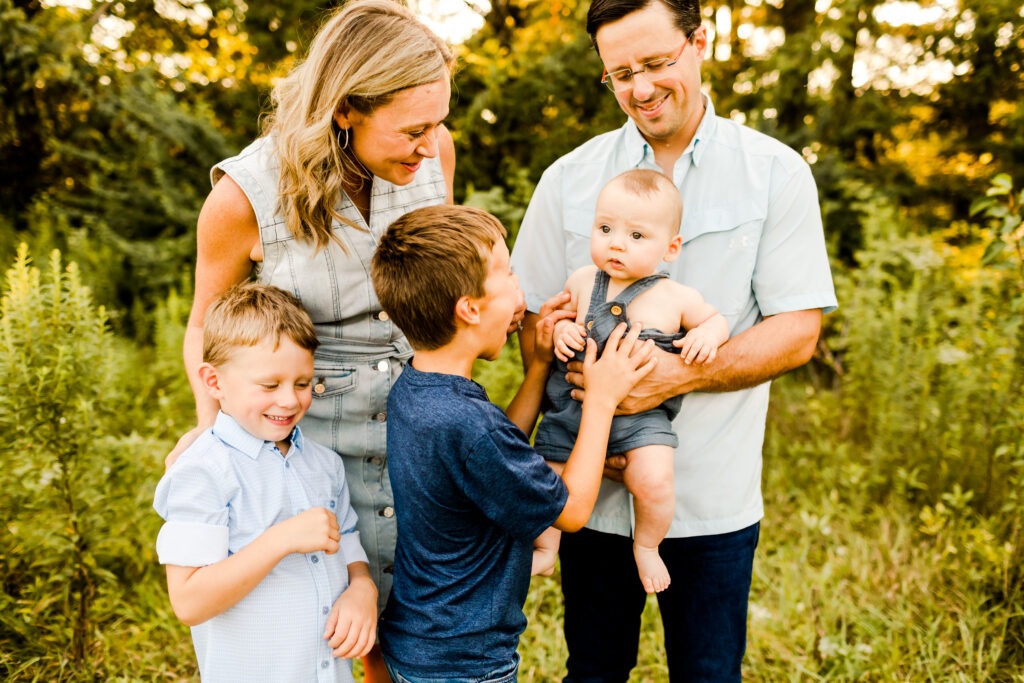
Focusing on the technical aspects becomes very important when working with bigger family groups. Your camera settings determine whether you get twenty happy faces in clear focus or a frustrating blur of missed chances.
Knowing Depth of Field and Aperture Settings for Large Groups
The most important technical consideration for larger family photography is getting enough depth of field. When photographing a family gathering last fall, we had to arrange many people in three rows. Using an f/8 aperture, we made sure everyone, from the three-year-old twins in front to the tallest uncles in the back row, stayed perfectly clear.
For larger family groups set up in multiple rows, use an aperture between f/5.6 and f/8 to increase your depth of field. This helps make sure everyone from front to back looks sharp. Set your focus on someone positioned in the front row, about one-third into the group, to get the most from your depth of field.
Forgetting to check basic camera settings is another common error. Before each large group session, we verify:
- ISO is as low as practical for the light
- RAW format is on for maximum image adjustment flexibility
- White balance is set appropriately
- Continuous autofocus is active, especially helpful with children
The Importance of Shutter Speed and Group Placement
Even with ideal aperture settings, your pictures can still disappoint if your shutter speed isn’t fast enough. We follow a simple guideline: use 1/125 second or quicker for all group photos, no matter how cooperative the family seems. If young children are present, aim for at least 1/200 second to stop their probable movements.
When photographing a family with three active children under age seven, keeping a shutter speed of 1/250s meant raising our ISO to 400 even in good light. This adjustment proved helpful when their four-year-old suddenly decided to jump instead of standing still, and we still got a clear picture.
Another common issue occurs when the group forms a U-shape or curve, with people on the ends stepping forward or backward. When photographing an extended family of many people, we noticed they naturally formed a curve during our initial test pictures. We quickly adjusted this by having everyone line up their toes along an imagined straight line, making sure the entire group stayed within our focus area.
Making a Balanced Picture with Interesting Views
Instead of arranging everyone in straight lines, create visual interest through groupings that are not perfectly symmetrical but still feel balanced. For a family gathering of many people, we used what photographers call a “Connected Clusters” formation. This meant positioning each immediate family in its own smaller group while keeping a visual link to the larger family. This recognized connections within the extended family and created a pleasant overall composition.
The staggered or multi-level arrangement is perhaps the most adaptable approach for larger groups. When photographing a family of many people, we had them posed on wide garden steps, which naturally created height variation that helped everyone’s face be seen. This technique involves:
- Placing the tallest individuals at the back
- Using natural features like steps or hills to make multiple levels
- Creating 2-3 distinct rows with thoughtful height differences
- Making sure faces are visible by having people in back rows stand slightly between those in front
Finding a raised shooting position significantly improves bigger family photos. When capturing a family’s four-generation portrait with many people, we used a six-foot ladder to shoot slightly downward. This viewpoint helped everyone’s face be visible and created a more energetic composition.
Key Thought:
Technical excellence with larger groups needs appropriate aperture settings, f/5.6-f/8, quicker shutter speeds, at least 1/125s, and inventive composition methods like multi-level arrangements and elevated camera positions.
Involving and Guiding Large Groups
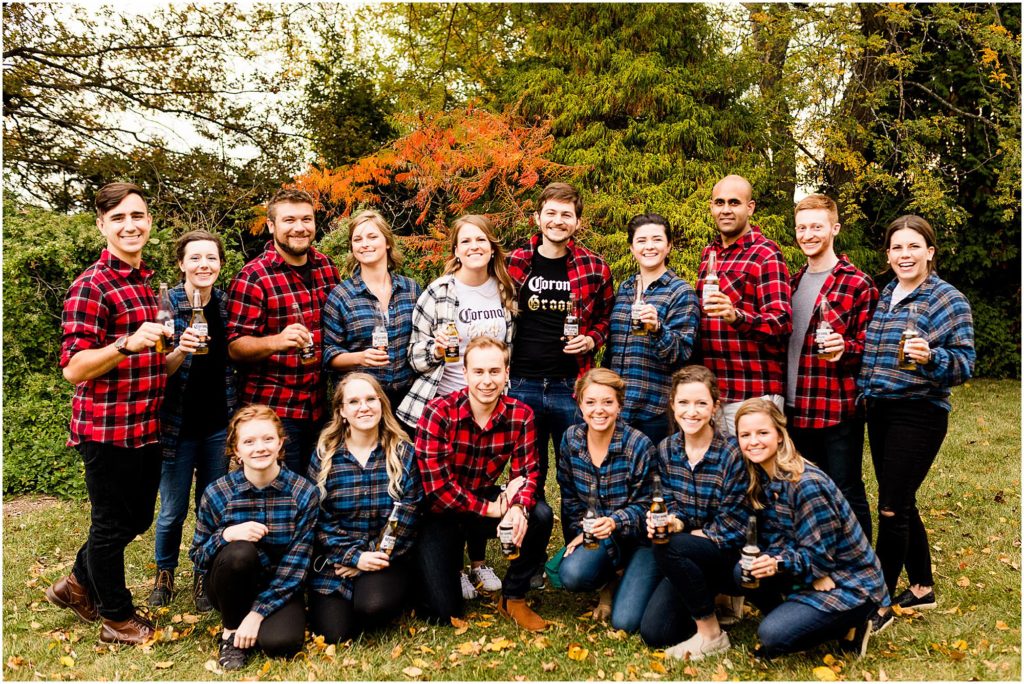
Being good at the technical side is only part of the journey. The real skill is in your ability to guide, involve, and connect with your subjects. This can change a potentially surprising situation into a good session.
Assigning Roles: The Photographer and the Helper
One of the most helpful methods we’ve used is identifying a family “helper” before the session starts. When photographing an extended family across three generations, we asked the eldest daughter, who had organized the session, to be our on-site assistant. She knew who belonged in each family sub-group and helped gather specific combinations quickly, allowing us to focus entirely on making beautiful pictures.
For particularly large groups, consider bringing your own assistant too. When we photographed a family gathering with many people, our three-person team approach worked brilliantly! We focused entirely on making beautiful images, our assistant handled technical adjustments, and the assigned family helper managed the human element.
Posing Methods for Natural and Candid Portraits
The arc or semicircle arrangement places family members in a gentle curve. This works especially well for larger groups as it creates depth and dimension while helping everyone stay visible. When photographing a family reunion, we arranged many family members in a wide semicircle, placing taller individuals toward the center with height gradually decreasing toward the edges. This formation created a feeling of togetherness while being visually engaging.
For a family’s multi-generational session, we created what photographers call a “Standing Phalanx with Connection Points.” This involved positioning family members in solid rows but including physical connections, hands on shoulders, linked arms, to maintain closeness and connection. The physical connections elevated this from a simple group photo to one that highlighted family bonds.
When working with a family’s four-generation portrait, we used a “Ground Arrangement” on their lakeside property. Some family members sat cross-legged on blankets, others sat on logs or rocks at different heights, and children were placed on parents’ laps or in front. This relaxed approach created a comfortable mood while still keeping structure.
Using Props and Encouraging Fun Interaction
Using props thoughtfully can change a standard portrait into a memorable, personality-filled image! For a family gathering celebrating their grandparents’ 50th anniversary, we included their handmade anniversary quilt spread beneath the seated elders. This added both visual appeal and special meaning to the portraits.
For families with young children, keep a few attention-grabbing items in your camera bag. When photographing a family with four children under six, our collection of silly animal puppets kept the youngest ones engaged with the camera. These are not usually visible in the finished images but help get children’s attention at key times.
Guiding the Group’s Attention and Building Self-Assurance
Keeping energy high throughout a large family session needs thoughtful planning and cheerful guidance. Clear, confident instructions help family members feel at ease. Instead of unclear guidance like “look happy,” provide specific directions: “Dad, put your hand on your son’s shoulder, Mom, turn slightly toward your daughter, everyone bring your chins slightly forward and down.”
For especially large groups, think about using a small Bluetooth speaker to amplify your voice without shouting. When photographing a family gathering outdoors with many people across a wide area, this simple tool helped us keep a calm tone while making sure everyone heard our directions clearly.
We’ve also learned the positive effect of validating feedback during the session. When capturing a family’s three-generation portrait, we made a point of showing them a few promising pictures on our camera’s screen throughout the session. Seeing how wonderful they looked together created excitement and renewed cooperation for the remaining poses!
Key Thought:
Good results with large groups depend on your ability to guide with confidence, maintain energy, and create a cooperative atmosphere. Designate a family helper, use formation methods like arcs or multi-level arrangements, and offer specific, encouraging feedback throughout the session.
Post-Session Considerations and Issue Solving
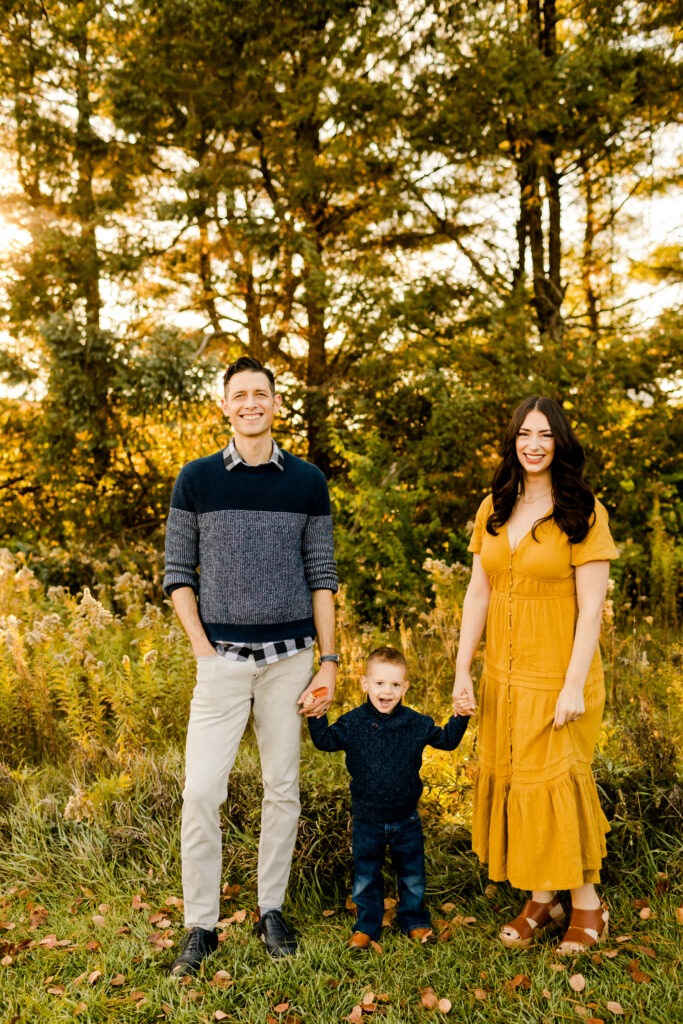
What happens after the session determines whether your larger family portrait becomes a cherished keepsake or another forgotten digital file.
Reviewing Photos: Checking for Goodness and Retakes
Make it a habit to do quick checks during the session, especially after finishing major group poses. When photographing a family gathering, we took a moment after the main group shot to look at the images carefully. This helped us notice that a grandparent had their eyes closed in several frames, and we quickly took more pictures before changing formations.
During these reviews, scan carefully for:
- Eyes closed or mid-blink expressions
- Family members hidden behind others
- Anyone looking away from the camera, unless planned
- Notable height or spacing problems affecting the composition
- Technical issues like focus discrepancies or light inconsistencies
Image Adjustment Directions for Enhancing Group Photos
Not managing the distance between the subject and background is a common mistake that makes image adjustment more complicated. When photographing a family in their backyard, we made sure to place them at least eight feet from the house. This helped create natural background separation that simplified post-processing and resulted in more professional-looking final images.
Working with RAW files provides a lot of room for fixing the natural light challenges in larger group photos. When adjusting family gathering portraits, we used gradual changes to balance the light between their front and back rows, accounting for the lighting difference between family members in partial shade versus full sun.
For very large groups, consider the “head swap” technique. This combines multiple images to create one ideal composite where everyone looks their best. When delivering the final main portrait for a family reunion of many people, we carefully combined elements from three separate frames, replacing blinking eyes and distracted expressions with better versions from alternate pictures.
Delivering Final Photos with Impact
The way you present your final images greatly affects how satisfied clients are. Instead of providing a chronological gallery of every picture, arrange images into meaningful collections like “Extended Family,” “Generations,” “Immediate Families,” and “Fun Times.”
For especially special images, such as the main extended family portrait, provide specific guidance on printing and display choices. When delivering a family’s generation portrait, we included suggestions for large-format printing, 30″x40″, that would beautifully feature all many family members, along with wall display ideas for their lake house great room.
For multi-generational sessions, consider making special “legacy packages” that include prints for each household. After photographing a family gathering with six separate households represented, we offered a collection that included both digital files and professional prints for each family. This helped make sure everyone received tangible memories from their reunion.
Key Thought:
The post-session workflow is very important for giving families pictures they will treasure. Review photos carefully during and after the session, use advanced editing methods when needed, and present final images in organized, meaningful collections with specific printing recommendations.
Larger family photography offers specific challenges, but when done well, it results in the most cherished images families will ever have. By becoming proficient in both the technical needs and the social skills needed, you’ll consistently create important portraits that capture not just faces, but the very essence of family connection across generations.
Affiliate Disclosure: Some links in this post are affiliate links, meaning we may earn a commission if you make a purchase through our links, at no extra cost to you. As wedding photographers ourselves, we only recommend gear we’ve thoroughly researched or would use in our own business. Your support helps us continue creating valuable content for the photography community.